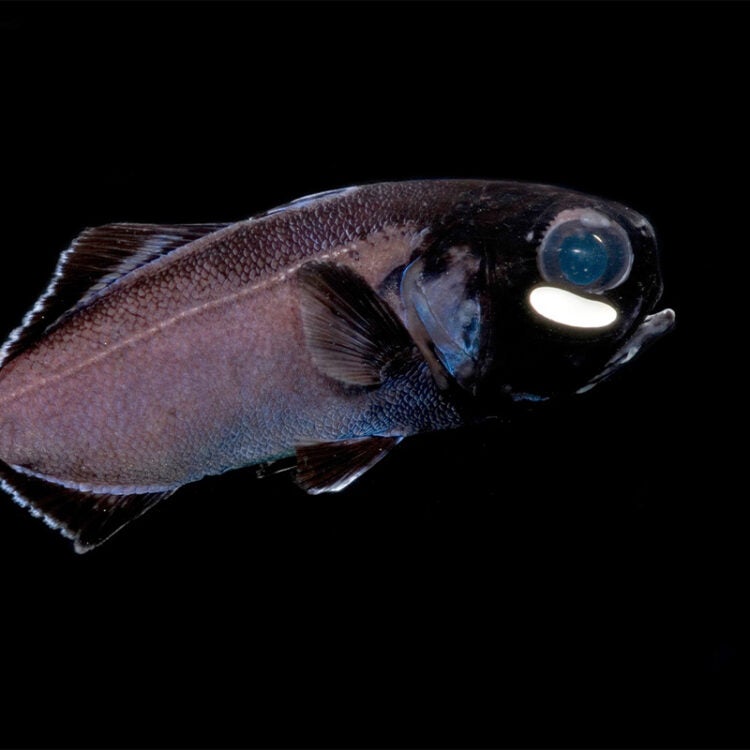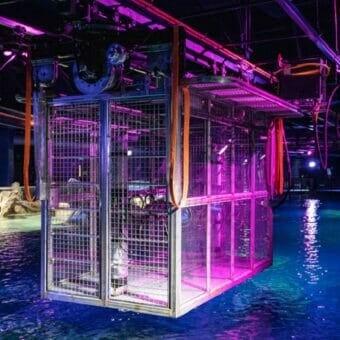-
Size
Up to 4.7 inches (12 cm) -
Diet
Zooplankton and small fish -
Range
Western and Central Pacific around Asia -
Habitat
Seaward reefs and caves
Physical Characteristics
- A rather short-bodied, charcoal gray fish with a black face and chin. White patches mark the base of the pectoral fins. A curving lateral line of raised dots run from behind the operculum to the caudal fin.
- Half-moon-shaped spots beneath the eyes are actually small organs that house light-producing bacteria in a symbiotic relationship. To eliminate the effect, the flashlight fish can “blink” dark membranes up to cover the light like an “upside-down eyelid”.
- Maximum length of up to 4.7 inches (12 cm) in length.
Animal Fun Fact
Flashlight fish are nocturnal and will hide in caves during the day.
Diet / Feeding
- Diet consists of zooplankton and small fish.
Range / Habitat
- Occurs in the Pacific from the Gulf of Thailand and the South China Sea through Indonesia and the Philippines, throughout the South Pacific to New Caledonia.
- Found around seaward reefs and in caves up to about 50 feet (15 m). Has been found at depths of as much as 164 feet (50 m).
Reproduction & Growth
- Oviparous, or egg-laying species. Adults spawn at night, with females producing as many as 1,000 eggs.
Conservation Status
- “Least Concern” on the IUCN Red List.
Additional Information
- Nocturnal; hides deep in caves during the day.
- This fish has the largest photophore, or light-producing organ, of any bioluminescent species. It also produces the brightest glow: can be seen from over 100 feet (30.5 m) away.
- Also known as the “lanterneye” fish or “one-fin flashlight” fish.
Sources
- fishbase.org
- iucnredlist.org
- https://fishesofaustralia.net.au/home/species/4330







